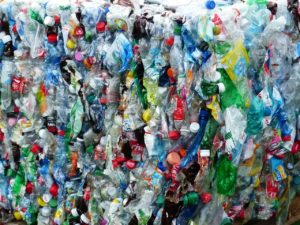Webinar
Environmental ‘Legislation’ 2020 update and how to comply from a business perspective
[vc_row][vc_column][vc_column_text]
In the opening Barbour EHS webinar of 2020 the panel identified and discussed some of the key planned environmental changes in 2020 and environmental compliance from a business perspective. Here, in this Q&A, the panellists revisit some of the listener questions which they were not able to answer on the day.
Topics covered:
 Environmental legislation 2020
Environmental legislation 2020
- The Environmental Bill;
- Legal developments in relation to plastic (including plastic packaging, the planned deposit return scheme and single-use plastic);
- Consultations on changes to producer responsibility (in the areas of packaging waste, WEEE and batteries);
- Consultation on changes to the MEES Regulations;
- The direction of travel at EU level including the EU green deal and the EU Circular Economy Roadmap.
How to comply, from a business perspective:
- Key criteria for businesses to evaluate compliance needs and associated obligations;
- Plastics – Impact of Legal compliance in relation to Recycled content Tax;
- Plastics – Extended Producer Responsibility and PRN from an industry perspective (including BPF & WRAP feedback) Decarbonisation in Packaging – Are all solutions equal and how can business help to overcome the minefield of perceived GHG and geographical/ political variations?
- Recycling options for the future: What are industries doing to support the Net Zero ambition?
[/vc_column_text][/vc_column][/vc_row][vc_row][vc_column][vc_btn title=”Click here to watch this webinar back in full.” color=”success” size=”lg” align=”center” button_block=”true” link=”url:https%3A%2F%2Fwww.barbour-ehs.com%2Fwebinar%2Fwatch-the-environmental-legislation-2020-update-webinar||target:%20_blank|”][/vc_column][/vc_row][vc_row][vc_column][vc_column_text]
The panel:
Shaine Gill-Ohrt, Compliance & Accreditation Manager, Skymark Packaging
 Shaine was born and raised in Germany and moved to the UK in 2002. He started his working life within the catering industry, where he spent four years. After a brief career change within the Fenestration industry, in which Shaine ran a PVCu paint spray project, he moved to Skymark and into the world of packaging.
Shaine was born and raised in Germany and moved to the UK in 2002. He started his working life within the catering industry, where he spent four years. After a brief career change within the Fenestration industry, in which Shaine ran a PVCu paint spray project, he moved to Skymark and into the world of packaging.
Having worked his way through the company, Shaine now supports the Technical Director to ensure all product compliance needs are met and certified, as well as managing the Quality, Hygiene and Environmental systems, including all 1st, 2nd and 3rd party audits.
During his time at Skymark, Shaine has managed to achieve best practice within the local area on Solvent Management plans, increased compliance on Waste Producer Responsibility, considerable reduction in consumption of Utilities and chemical raw materials, as well as guiding Skymark onto the brink of Zero Waste to landfill certification.
Jane Southworth, Partner, Eversheds Sutherland

Jane Southworth joined Eversheds Sutherland in 2002 and is a Partner in the EHS team, specialising in non-contentious environmental matters. Key areas of her work include: compliance with environmental legislation, including in relation to environmental permitting, and waste management.
Jane also advises on all aspects of producer responsibility in particular in the areas of WEEE, ROHS packaging and REACH, including in the context of preparing for Brexit.
Jane is very interested in the development of the circular economy and the definition of waste and the incoming legislation in relation to packaging and plastic more generally. She also advises on energy related legislation such as ESOS, EPCs and MEES.
In addition to providing UK only advice, Jane regularly works with colleagues across the globe to provide multijurisdictional advice from a single point of contact in the UK.
Jane also regularly assesses environmental risks in the context of mergers and acquisitions and real estate transactions.
I get frustrated when I hear so much about adding tax to a problem when the reality is, plastics can and will still be used ‘because it will be available’.
Shaine Gill-Ohrt (SGO): “I couldn’t agree more. Plastics will remain an important resource. As you have stated, the issue is not the material, it is the way we handle it. WRAP UK are engaging in several behavioural campaigns, but in my view the underlying issue is the recycling infrastructure.”
We work on a customer’s site bail their cardboard waste and some plastic sheeting. Where does our responsibility start and end in relation to tracking the amount of waste cardboard and packaging, we handle on the customers behalf?
SGO: “All waste should be recorded. Whilst the EPR will only be tracking Obligated packaging, the local authority may well issue permits which require mass balances to be made available upon request.”
Is the tax levy on buyers of plastic or manufacturers?
SGO: “The tax levy will affect Manufacturers, but as always, the cost of any increases will likely filter down the supply chain and ultimately to the consumer.”
I would like a clear classical of plastics i.e very soft, easily crumbled like wrapper one, hard, semi hard, coloured and marks on each type as recyclable or otherwise, any taxed one, on what base taxing, etc?
SGO: “All plastics will be affected; some may be banned. WRAP plastics pact is a good document to start in order to get an idea of future product bans. In regard to taxation, all plastics must contain 30% recycled content, however some may legally be prohibited from doing so. EY assessed the issue in one of their audits and found that a fraction of industry will be carrying 100% of the tax burden (Pharma, cosmetics and food).”
Any marking on plastics its font size, colour and language, and pictogram?
SGO: “OPRL is a good starting point, however these are confusing: Whilst product may be recyclable, local recycling restrictions may mean that they will continue to be landfilled (Yoghurt pots is a good example). It’s best advised to check with your target market on the infrastructure. In principle, using OPRL or Mobius labelling is designed to make the consumers’ life easier.”
Would it be useful to raise awareness amongst consumers? E.g. need to fully clean plastic food packaging before recycling to avoid waste stream contamination, avoiding black plastic, etc.
SGO: “Good idea. WRAP is launching schemes, together with the BPF (British Plastics federation) who continue to lobby industry’s standpoint and in cases unfair treatment. Black plastics will likely be fazed out, as the Carbon Black additive is in most cases non-detectable. However, European design projects are focussing on systems which detect chemical signatures and a system based on ‘invisible’ barcoding (essentially bar coding built into the Print design to allow a high-speed reader to determine the material’s composition based on known database entries).”
What is required for reusable plastics and which one can be used for sterile usage etc?
SGO: “Essentially speaking every plastic in its own form can be re-usable. Issues arise when you combine different types of plastics with one another, e.g. Polyethylene and Polypropylene. The Multi-structures are almost impossible to separate effectively. The same applies for any other laminated/ multi-structure, such as plain plastic to nylon woven fabrics, etc. PLastics themselves are classed as inherently sterile, however under BRC Issue 6 (due in February) you may be requested to prove this. Testing kits or Lab analysis via e.g. Campden BRI (Others may be available) will be able to conduct sample testing for you.”
Any information to end user to be encouraged to follow the reuse, recycling, and reduce usage?
SGO: “In my opinion, end users will remain as confused tomorrow as they are today. The reason is that whilst Labelling is available to indicate whether products can be recycled, the infrastructure may not be. Pots and tubs are a prime example of a recyclable material which is rarely collected in the UK.”
Some plastics materials are microwave oven safe, how one can figure out how safe is microwaveable plastics is?
SGO: “All plastics must undergo suitability testing. In some cases, this will be via controlled trials. However, the key criteria will be adherence to EC 10/2011 migration and relevant end application testing. It is important to note that under EC 10/2011 it is the End User (seller/ packer) who is ultimately responsible to conduct testing on the final packaging format including its intended use.”
Plastic water bottle may release some micro plastics particle in water/its container, if yes what is the danger to health?
SGO: “Microplastics is a difficult field with little scientific knowledge. This is because thus far there have been no known causes of effects (to my knowledge) linked to Microplastics. They have been found within the food chain (fish, etc) but no scientific research has outlined the dangers to human health. Check out https://www.sapea.info/topics/microplastics/ for more details.”
If use of plastic by human is safe can also be safe to other living animals?
SGO: “The key difference is distinguishing between use and consumption. Using plastics is fine, consuming (as in digesting) will be unhealthy for all species. Therefore plastics in the environment are a bad idea. However, it is worth remembering that plastics do not throw themselves into the wild. We as humans do that. So aside from the relevant infrastructure to recycle, we need to make sure we treat the environment with the respect it deserves. That means keep hold of our rubbish until we find a suitable bin.”
Is environmental legislation mandatory or does it only become mandatory based on number of employees etc?
Jane Southworth (JS): “This depends entirely on the piece of legislation. Some of the legislation which has environmental protection at its heart e.g. to comply with your duty of care in relation to waste, or not to cause contamination to apply to everybody. However, some of the other legislation such as compliance with the packaging waste regime, ESOS, WEEE and Batteries do have thresholds. In some cases, small businesses are exempt altogether and in other cases they have less onerous obligations.”
Do retailers of EEE have obligations to provide a disposal service to customers?
JS: “Under the WEEE Regulations there are two distinct sets of obligations. Producers have obligations regarding financing the end of life costs of WEEE. Retailers acting purely as retailers ie not brand owners and not importers have obligations to provide like for like take back of WEEE when a customer buys a new product. To date many retailers have satisfied this obligation by joining the Distributor Take Back Scheme. Some retailers do offer instore take back. It should be noted that large retailers will be obliged to offer instore takeback from 1 January 2021 and will not be able to use the Distributor Take Back Scheme.
How is BREXIT going to affect environmental legislation?
JS: “It is difficult to say at present. Much depends on the trade deal which is negotiated. The closer we stay to a Norwegian model the more likely our laws including environmental laws will be fully aligned. If we end 2020 with a “no deal” then in theory our laws could change dramatically, and we could see a weakening in environmental protection. However, in practice, in the short term I think major changes are unlikely. Many of the regimes in place have been around for a while and are largely working well. Also the government is keen to remain a leader in relation to tackling climate change and therefore many of the policies which the EU is following e.g. the move to a circular economy model and legislation to encourage the reduction in the amount of packaging etc will remain important from a UK standpoint as well.”
HSE will remain the UK competent authority for UK REACH?
JS: “Yes, it is intended that the HSE will be the UK REACH regulator.”
[/vc_column_text][vc_btn title=”Click here to watch this webinar back in full.” color=”success” size=”lg” align=”center” button_block=”true” link=”url:https%3A%2F%2Fwww.barbour-ehs.com%2Fwebinar%2Fwatch-the-environmental-legislation-2020-update-webinar||target:%20_blank|”][/vc_column][/vc_row][vc_row][vc_column][/vc_column][/vc_row]
[vc_row][vc_column width="2/3"][vc_column_text]
SHP Webinars
Find upcoming live, interactive webinars plus on-demand sessions to watch back at your convenience.
SHP runs regular health and safety webinars on a wide range of topics, from high level thought leadership, to legislation updates and technical guidance.Click below to see what’s coming up and what you can watch right now...[/vc_column_text][/vc_column][vc_column width="1/3"][vc_single_image image="77451" img_size="medium"][/vc_column][/vc_row][vc_row][vc_column][vc_btn title="Click here to view the latest SHP webinars" color="green" link="url:https%3A%2F%2Fwww.shponline.co.uk%2Fshp-webinars%2F%3Fcid%3Dnav|target:_blank"][/vc_column][/vc_row]
Environmental ‘Legislation’ 2020 update and how to comply from a business perspective
In the opening webinar of 2020 the panel identified and discussed some of the key planned environmental changes in 2020 and environmental compliance from a business perspective. Here, in this Q&A, the panellists revisit some of the listener questions which they were not able to answer on the day.
Teresa Higgins
SHP - Health and Safety News, Legislation, PPE, CPD and Resources Related Topics
The impact of climate change on occupational safety and health
Webinar: Building Safety Act – what you need to know
Webinar: Health and Safety Legislation Update

 Environmental legislation 2020
Environmental legislation 2020 Shaine was born and raised in Germany and moved to the UK in 2002. He started his working life within the catering industry, where he spent four years. After a brief career change within the Fenestration industry, in which Shaine ran a PVCu paint spray project, he moved to Skymark and into the world of packaging.
Shaine was born and raised in Germany and moved to the UK in 2002. He started his working life within the catering industry, where he spent four years. After a brief career change within the Fenestration industry, in which Shaine ran a PVCu paint spray project, he moved to Skymark and into the world of packaging.